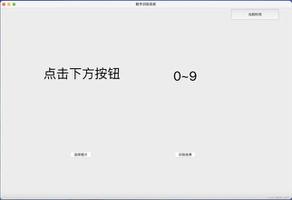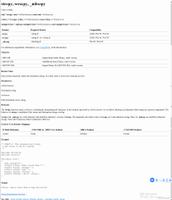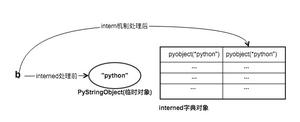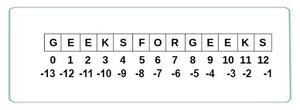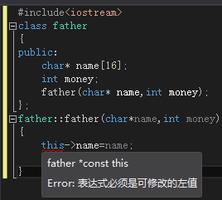如何在Python中将一个字符串附加到另一个字符串?
除了以下内容外,我想要一种有效的方法来在Python中将一个字符串附加到另一个字符串。
var1 = "foo"var2 = "bar"
var3 = var1 + var2
有什么好的内置方法可以使用吗?
回答:
如果你仅对一个字符串有一个引用,并且将另一个字符串连接到末尾,则CPython现在会对此进行特殊处理,并尝试在适当位置扩展该字符串。
最终结果是将操作摊销O(n)。
例如
s = ""for i in range(n):
s+=str(i)
过去是O(n ^ 2),但现在是O(n)。
从源(bytesobject.c):
voidPyBytes_ConcatAndDel(register PyObject **pv, register PyObject *w)
{
PyBytes_Concat(pv, w);
Py_XDECREF(w);
}
/* The following function breaks the notion that strings are immutable:
it changes the size of a string. We get away with this only if there
is only one module referencing the object. You can also think of it
as creating a new string object and destroying the old one, only
more efficiently. In any case, don't use this if the string may
already be known to some other part of the code...
Note that if there's not enough memory to resize the string, the original
string object at *pv is deallocated, *pv is set to NULL, an "out of
memory" exception is set, and -1 is returned. Else (on success) 0 is
returned, and the value in *pv may or may not be the same as on input.
As always, an extra byte is allocated for a trailing \0 byte (newsize
does *not* include that), and a trailing \0 byte is stored.
*/
int
_PyBytes_Resize(PyObject **pv, Py_ssize_t newsize)
{
register PyObject *v;
register PyBytesObject *sv;
v = *pv;
if (!PyBytes_Check(v) || Py_REFCNT(v) != 1 || newsize < 0) {
*pv = 0;
Py_DECREF(v);
PyErr_BadInternalCall();
return -1;
}
/* XXX UNREF/NEWREF interface should be more symmetrical */
_Py_DEC_REFTOTAL;
_Py_ForgetReference(v);
*pv = (PyObject *)
PyObject_REALLOC((char *)v, PyBytesObject_SIZE + newsize);
if (*pv == NULL) {
PyObject_Del(v);
PyErr_NoMemory();
return -1;
}
_Py_NewReference(*pv);
sv = (PyBytesObject *) *pv;
Py_SIZE(sv) = newsize;
sv->ob_sval[newsize] = '\0';
sv->ob_shash = -1; /* invalidate cached hash value */
return 0;
}
凭经验进行验证很容易。
$ python -m timeit -s"s=''" "for i in xrange(10):s+='a'"1000000 loops, best of 3: 1.85 usec per loop
$ python -m timeit -s"s=''" "for i in xrange(100):s+='a'"
10000 loops, best of 3: 16.8 usec per loop
$ python -m timeit -s"s=''" "for i in xrange(1000):s+='a'"
10000 loops, best of 3: 158 usec per loop
$ python -m timeit -s"s=''" "for i in xrange(10000):s+='a'"
1000 loops, best of 3: 1.71 msec per loop
$ python -m timeit -s"s=''" "for i in xrange(100000):s+='a'"
10 loops, best of 3: 14.6 msec per loop
$ python -m timeit -s"s=''" "for i in xrange(1000000):s+='a'"
10 loops, best of 3: 173 msec per loop
不过,请务必注意,此优化不是Python规范的一部分。据我所知,它仅在cPython实现中。例如,对pypy或jython进行的相同经验测试可能会显示较旧的O(n ** 2)性能。
$ pypy -m timeit -s"s=''" "for i in xrange(10):s+='a'"10000 loops, best of 3: 90.8 usec per loop
$ pypy -m timeit -s"s=''" "for i in xrange(100):s+='a'"
1000 loops, best of 3: 896 usec per loop
$ pypy -m timeit -s"s=''" "for i in xrange(1000):s+='a'"
100 loops, best of 3: 9.03 msec per loop
$ pypy -m timeit -s"s=''" "for i in xrange(10000):s+='a'"
10 loops, best of 3: 89.5 msec per loop
到目前为止一切顺利,但随后,
$ pypy -m timeit -s"s=''" "for i in xrange(100000):s+='a'"10 loops, best of 3: 12.8 sec per loop
哎呀,甚至比二次还差。因此,pypy可以在短字符串上做得很好,但是在较大的字符串上却表现不佳。
以上是 如何在Python中将一个字符串附加到另一个字符串? 的全部内容, 来源链接: utcz.com/qa/422684.html

